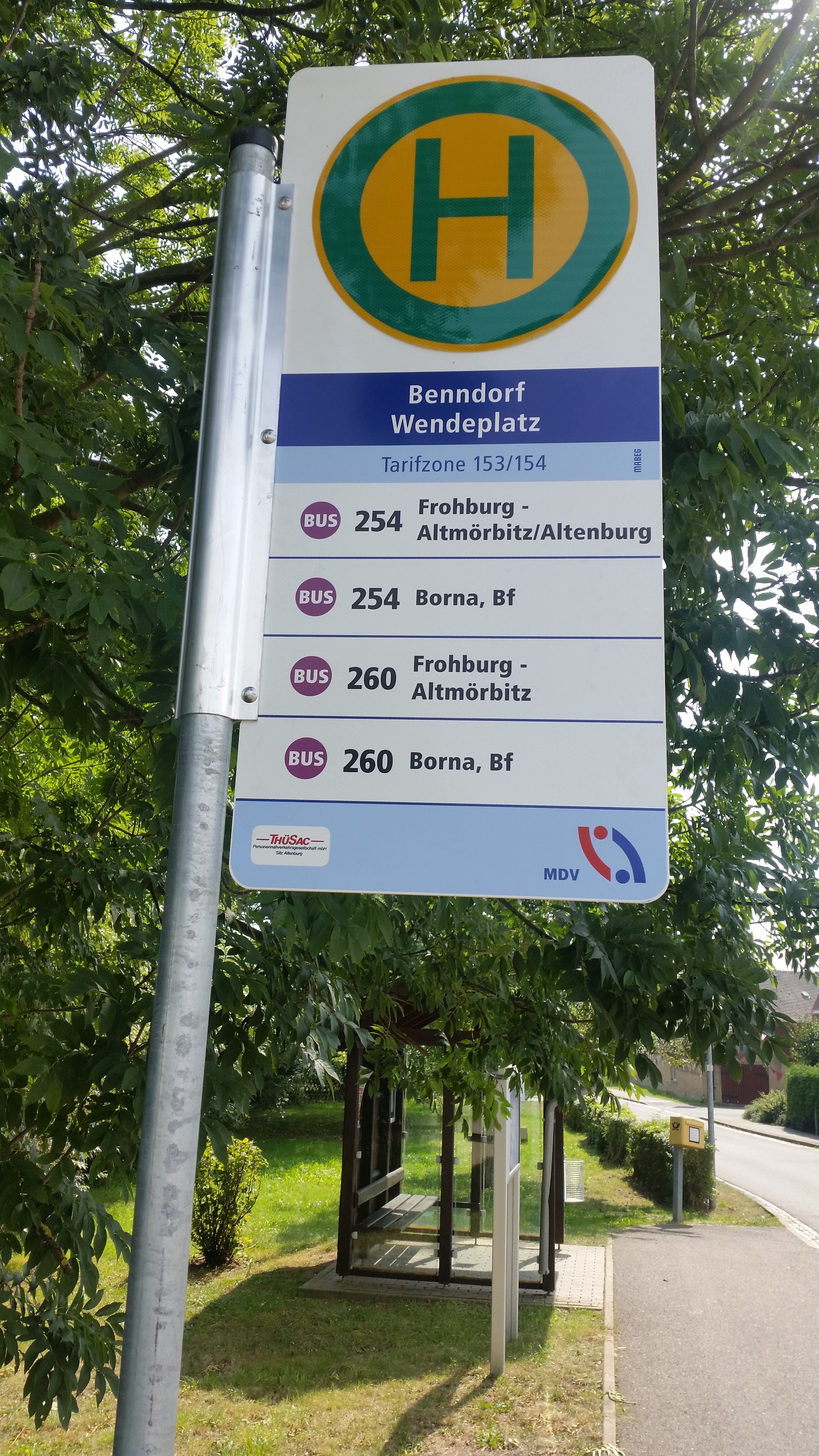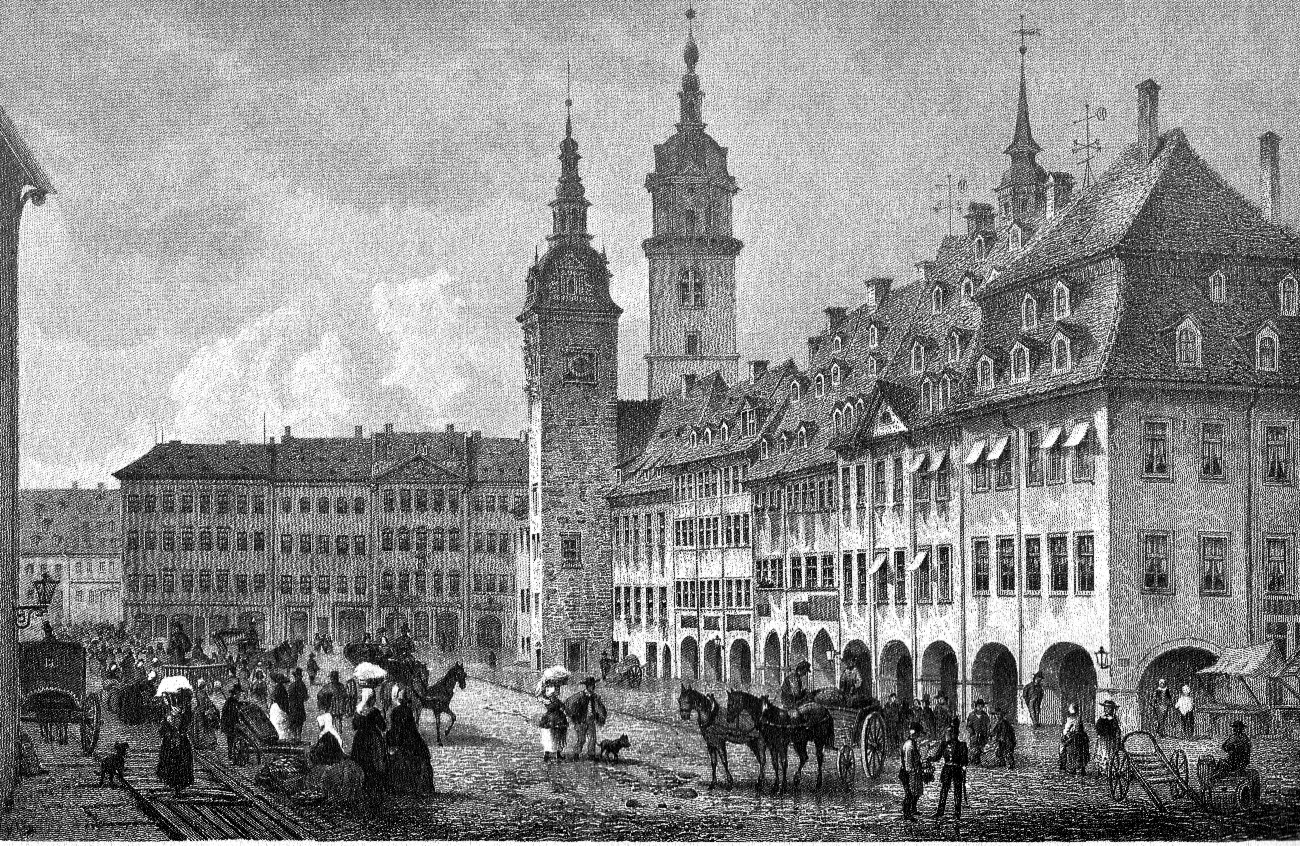|
Benndorf (Frohburg)
Benndorf is a district of the town Frohburg in the Landkreis Leipzig district of Saxony, Germany. The former independent municipality became a district of Frohburg on 1 January 1997. Since 1948, the former independent municipality Bubendorf became part of Benndorf. Geography and traffic Location The village is situated in the valley of the Wyhra river 2 km north of Frohburg and 7 km southeast of Borna. Benndorf is 30 km south of Leipzig. West of it - in the forest - is the Thuringia state border. Roads Benndorf is connected to state route 51, on which one can reach the near Borna, by two narrow streets. Benndorf has bus connections to Borna, Altenburg and Frohburg. Railroad The Frohburg rail station is two kilometers northeast of Benndorf. It is connected via local trains to Leipzig and Geithain. Airports The closest airport, the Leipzig-Altenburg Airport at Nobitz, is situated 15 km south of Benndorf. The next closest airports with regular ... [...More Info...] [...Related Items...] OR: [Wikipedia] [Google] [Baidu] |
Frohburg
Frohburg is a town in the Leipzig district, in Saxony, Germany. It is situated 11 km northeast of Altenburg, and 34 km southeast of Leipzig. It includes the village of Flößberg and the town Kohren-Sahlis. History Frohburg castle was first mentioned in documents at the end of the 10th century, the first documentary mention of the settlement itself dates from 1198, and in 1233 it is known as a town (''oppidum''), although it had no explicit town privileges and was directly ruled by the lord of the castle, which at this time was the burgrave of Altenburg. Town privileges were only awarded to Frohburg in 1831, and the first mayor elected three years later. Until the mid-16th century, Frohburg was part of '' Pflege'' Altenburg, and from then on until 1856 of Amt Borna. From then on it was the centre of the judicial district (''Gerichtsamt'') Frohburg, until it passed to ''Amtshauptmannschaft'' (district) Borna. Following a recession in the 19th century, the establi ... [...More Info...] [...Related Items...] OR: [Wikipedia] [Google] [Baidu] |
Kurfürstentum Sachsen
The Electorate of Saxony, also known as Electoral Saxony (German: or ), was a territory of the Holy Roman Empire from 1356–1806. It was centered around the cities of Dresden, Leipzig and Chemnitz. In the Golden Bull of 1356, Emperor Charles IV designated the Duchy of Saxe-Wittenberg an electorate, a territory whose ruler was one of the prince-electors who chose the Holy Roman emperor. After the extinction of the male Saxe-Wittenberg line of the House of Ascania in 1422, the duchy and the electorate passed to the House of Wettin. The electoral privilege was tied only to the Electoral Circle, specifically the territory of the former Duchy of Saxe-Wittenberg. In the 1485 Treaty of Leipzig, the Wettin noble house was divided between the sons of Elector Frederick II into the Ernestine and Albertine lines, with the electoral district going to the Ernestines. In 1547, when the Ernestine elector John Frederick I was defeated in the Schmalkaldic War, the electoral district and elect ... [...More Info...] [...Related Items...] OR: [Wikipedia] [Google] [Baidu] |
Patronage
Patronage is the support, encouragement, privilege, or financial aid that an organization or individual bestows on another. In the history of art, arts patronage refers to the support that kings, popes, and the wealthy have provided to artists such as musicians, painters, and sculptors. It can also refer to the right of bestowing offices or church benefices, the business given to a store by a regular customer, and the guardianship of saints. The word "patron" derives from the la, patronus ("patron"), one who gives benefits to his clients (see Patronage in ancient Rome). In some countries the term is used to describe political patronage or patronal politics, which is the use of state resources to reward individuals for their electoral support. Some patronage systems are legal, as in the Canadian tradition of the Prime Minister to appoint senators and the heads of a number of commissions and agencies; in many cases, these appointments go to people who have supported the politic ... [...More Info...] [...Related Items...] OR: [Wikipedia] [Google] [Baidu] |
Chemnitz
Chemnitz (; from 1953 to 1990: Karl-Marx-Stadt , ) is the third-largest city in the German state of Saxony after Leipzig and Dresden. It is the 28th largest city of Germany as well as the fourth largest city in the area of former East Germany after ( East) Berlin, Leipzig and Dresden. The city is part of the Central German Metropolitan Region, and lies in the middle of a string of cities sitting in the densely populated northern foreland of the Elster and Ore Mountains, stretching from Plauen in the southwest via Zwickau, Chemnitz and Freiberg to Dresden in the northeast. Located in the Ore Mountain Basin, the city is surrounded by the Ore Mountains to the south and the Central Saxon Hill Country to the north. The city stands on the Chemnitz River (progression: ), which is formed through the confluence of the rivers Zwönitz and Würschnitz in the borough of Altchemnitz. The name of the city as well as the names of the rivers are of Slavic origin. Chemnitz is t ... [...More Info...] [...Related Items...] OR: [Wikipedia] [Google] [Baidu] |
Benedictine
, image = Medalla San Benito.PNG , caption = Design on the obverse side of the Saint Benedict Medal , abbreviation = OSB , formation = , motto = (English: 'Pray and Work') , founder = Benedict of Nursia , founding_location = Subiaco Abbey , type = Catholic religious order , headquarters = Sant'Anselmo all'Aventino , num_members = 6,802 (3,419 priests) as of 2020 , leader_title = Abbot Primate , leader_name = Gregory Polan, OSB , main_organ = Benedictine Confederation , parent_organization = Catholic Church , website = The Benedictines, officially the Order of Saint Benedict ( la, Ordo Sancti Benedicti, abbreviated as OSB), are a monastic religious order of the Catholic Church following the Rule of Saint Benedict. They are also sometimes called the Black Monks, in reference to the colour of their religious habits. They w ... [...More Info...] [...Related Items...] OR: [Wikipedia] [Google] [Baidu] |
Parish
A parish is a territorial entity in many Christian denominations, constituting a division within a diocese. A parish is under the pastoral care and clerical jurisdiction of a priest, often termed a parish priest, who might be assisted by one or more curates, and who operates from a parish church. Historically, a parish often covered the same geographical area as a manor. Its association with the parish church remains paramount. By extension the term ''parish'' refers not only to the territorial entity but to the people of its community or congregation as well as to church property within it. In England this church property was technically in ownership of the parish priest '' ex-officio'', vested in him on his institution to that parish. Etymology and use First attested in English in the late, 13th century, the word ''parish'' comes from the Old French ''paroisse'', in turn from la, paroecia, the latinisation of the grc, παροικία, paroikia, "sojourning in a fore ... [...More Info...] [...Related Items...] OR: [Wikipedia] [Google] [Baidu] |
Evangelical Lutheran Church Of Saxony
The Evangelical-Lutheran Church of Saxony (''Evangelisch-Lutherische Landeskirche Sachsens'') is one of 20 member Churches of the Evangelical Church in Germany (EKD), covering most of the state of Saxony. Its headquarters are in Dresden, and its bishop (styled Bishop of Saxony) has his or her seat at Meissen Cathedral. History Historically, its organisation became an example for other Protestant churches to be founded throughout Europe, the so-called "Saxon model" of a church as introduced by Martin Luther itself. It was closely tied to the state, whereby the Elector of Saxony protected the evangelical faith in his jurisdiction. Since the Reformation, the Lutheran orthodoxy (the "purest form" of Lutheranism) prevailed among the general population in Saxony and was secured first by its Ernestine and later Albertine Wettin rulers. Beginning in the 17th century, Pietism also gained a significant following, especially among the working class. In 2019, Carsten Rentzing, bishop of the c ... [...More Info...] [...Related Items...] OR: [Wikipedia] [Google] [Baidu] |
Corn Maze
A corn maze or maize maze is a maze cut out of a maize, corn field. Originally, the first full-size corn maze was believed to be created in Annville, Pennsylvania in 1993; however, similar corn mazes were highlighted in newspapers as early as 1982. Corn mazes have become popular tourist attractions in North America, and are a way for farms to generate tourist income. Many are based on artistic designs such as characters from movies. Corn mazes appear in many different designs. Some mazes are even created to tell stories or to portray a particular theme. Most have a path which goes all around the whole pattern, either to end in the middle or to come back out again, with various false trails diverging from the main path. In the United Kingdom, they are known as ''maize mazes'', and are especially popular with farms in the east of England. These mazes are normally combined with other farm attractions of interest to families and day trippers. Some of these attractions include Hayride, ... [...More Info...] [...Related Items...] OR: [Wikipedia] [Google] [Baidu] |
Tudor Architecture
The Tudor architectural style is the final development of Medieval architecture in England and Wales, during the Tudor period (1485–1603) and even beyond, and also the tentative introduction of Renaissance architecture to Britain. It followed the Late Gothic Perpendicular style and, gradually, it evolved into an aesthetic more consistent with trends already in motion on the continent, evidenced by other nations already having the Northern Renaissance underway Italy, and especially France already well into its revolution in art, architecture, and thought. A subtype of Tudor architecture is Elizabethan architecture, from about 1560 to 1600, which has continuity with the subsequent Jacobean architecture in the early Stuart period. In the much more slow-moving styles of vernacular architecture, "Tudor" has become a designation for half-timbered buildings, although there are cruck and frame houses with half timbering that considerably predate 1485 and others well after 1603; ... [...More Info...] [...Related Items...] OR: [Wikipedia] [Google] [Baidu] |
Benndorf Häuslerhaus
Benndorf is a municipality in the Mansfeld-Südharz district, Saxony-Anhalt, Germany. References Municipalities in Saxony-Anhalt Mansfeld-Südharz {{MansfeldSüdharz-geo-stub ... [...More Info...] [...Related Items...] OR: [Wikipedia] [Google] [Baidu] |


_(31023042187)_CROP.jpg)





